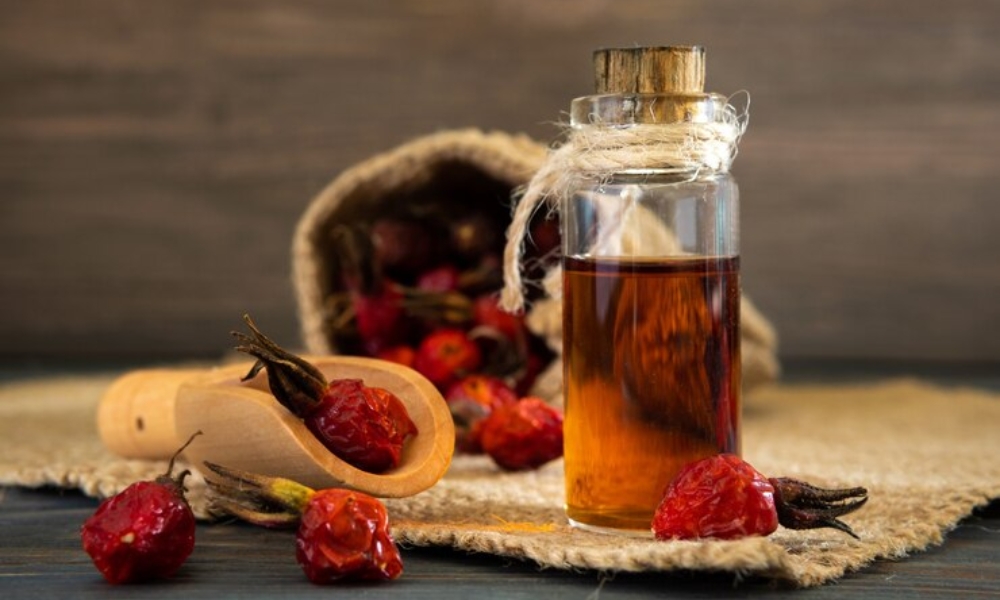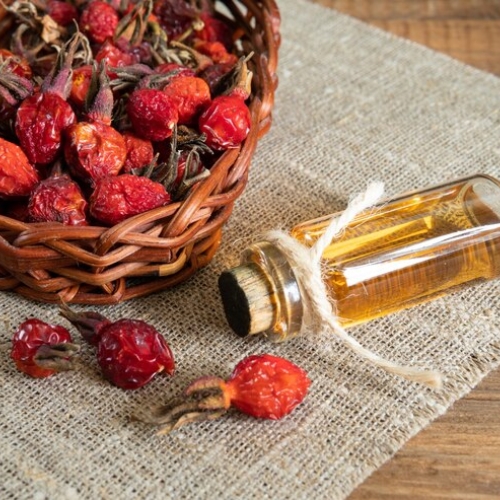
Mace oil, a lesser-known yet incredibly versatile essential oil, has a rich history rooted in the spice trade and traditional herbal medicine. Extracted from the dried lacy covering of nutmeg seeds, known as aril, mace has transitioned from being a valued spice to a potent essential oil used in aromatherapy, wellness and various formulations. Its journey from the spice shelves of ancient kitchens to the laboratories of modern essential oil production highlights its importance and timeless appeal.
This article delves into the history origins, transition from spice to essential oil, advancements in mace oil production and its role in herbal medicine, encouraging its integration into modern wellness practices.
Origins and Historical Significance of Mace
1. The Discovery of Mace
- Mace comes from the nutmeg tree, a tropical evergreen native to the Banda Islands, also known as the Spice Islands in Indonesia.
- It was discovered thousands of years ago by indigenous islanders who recognized its culinary and medicinal value.
2. The Spice Trade and Mace
- During the spice trade era, mace was considered one of the most valuable commodities, alongside nutmeg and cloves.
- European explorers and merchants sought mace for its distinctive flavour and preservative properties, fueling its demand and global distribution.
3. Mace in Traditional Medicine
- In traditional medicine, mace was used for its warming properties to treat digestive issues, colds and muscle aches.
- Ancient texts from Ayurveda and Chinese medicine highlight mace’s use as a natural remedy for enhancing vitality and promoting health.
Transformation From Spice to Essential Oil
1. Transition to Essential Oil
- The shift from spice to essential oil occurred with advancements in distillation techniques, allowing the extraction of mace oil from the dried aril.
- Mace oil retains the aromatic and therapeutic properties of mace, making it a concentrated and versatile product.
2. The Aroma and Composition
- Mace oil carries a warm, spicy and slightly sweet aroma, similar to nutmeg but with a more delicate and floral note.
- It is rich in bioactive compounds like myristicin, safrole and eugenol, contributing to its therapeutic benefits.
3. Culinary to Medicinal Uses
- While mace remains a popular culinary spice, its oil form is widely used in aromatherapy, massage blends and topical formulations for its calming and invigorating properties.
Why Choose Mace Oil?
1. Mace Oil Supports Natural Healing Properties
- Mace oil offers a range of therapeutic benefits, from alleviating stress to relieving muscle pain, aligning perfectly with the principles of herbal medicine.
- Its warming properties may stimulate circulation and soothe discomfort.
2. Mace Oil Promotes Sustainable and Ethical Sourcing
- Mace oil production often supports sustainable agriculture in tropical regions, contributing to local economies and environmental conservation.
3. Mace Oil Enhances Consistency and Versatility
- Unlike raw mace, the oil provides a consistent concentration of active compounds, ensuring reliable results in formulations.
- Its adaptability makes it suitable for various applications, including health, skincare and household products.
Advancements in Mace Oil
1. Steam Distillation Techniques
- Modern steam distillation methods have improved the efficiency and purity of mace oil extraction.
- This ensures a high-quality product with minimal impurities, enhancing its therapeutic potential.
2. Reconstitution for Enhanced Performance
- Reconstitution processes replicate the natural aroma and bio-active properties of mace, ensuring consistent quality and performance in larger-scale production.
3. Innovations in Blending
- Mace oil is now blended with other essential oils like cinnamon, clove and orange to create unique aromatic profiles for specific wellness applications.
- These blends amplify its therapeutic effects and expand its usage.
Advantages of Mace Oil in Essential Oils
1. Mace Oil Supports Digestive Health
- Traditionally used as a digestive aid, mace oil may relieve bloating and indigestion when applied topically or used in aromatic therapies.
2. Mace Oil Improves Circulation
- Its warming properties stimulate blood flow, making it effective for relieving cold extremities and supporting overall circulation.
3. Mace Oil Combats Infections
- Mace oil’s antimicrobial properties may help reduce the risk of infections when used in topical applications or household sprays.

4. Mace Oil Promotes Restful Sleep
- Diffusing mace oil in the evening may create a calming environment conducive to better sleep.
Impact of Mace Oil on the Global Market
1. Regional Demand
- Asia-Pacific: Mace oil’s historical roots in the spice trade drive demand in traditional medicine and modern wellness industries.
- Europe: Increasing interest in natural and herbal remedies has boosted mace oil’s usage in aromatherapy and skincare.
- North America: The oil is gaining traction in the wellness market, with applications in stress management and holistic health products.
2. Expanding Applications
- Mace oil’s versatility ensures its presence in diverse industries, from wellness and cosmetics to pharmaceuticals.
- Its role as a natural fixative in perfumery further highlights its importance.
Conclusion: The Timeless Appeal of Mace Oil
Mace oil journey from spice to essential oil showcases its enduring value in both traditional and modern wellness practices. Its warm aroma, therapeutic properties and versatile applications make it an indispensable ingredient in aromatherapy and personal care. As the global demand for natural products grows, mace oil continues to shape the wellness and fragrance industries with its rich heritage and unmatched benefits.
Recent Posts
- Resinoid Benzoin in Perfume and Cosmetic Industries: Growing Demand
- Resinoid Galbanum in the Aromatics Industry: Growing Key Trends
- Balsamic Depth and Woody Elegance of Resinoid Guggul
- How Oudh 13 Delivers Rich Fragrance and Reliable Performance in Perfumery?
- Saffron Extract: Blending Iranian Richness and Indian Precision
- Olibanum Crystals: A Timeless Essence in Components, Fragrance and Emerging Trends
- Balsam Tolu: Chemistry, Aroma Blends and Market Insights
Copyright @ 2025 | BMV Fragrances Private Limited | All Rights Reserved
Website Design & Digital Marketing by webmasterindia.


